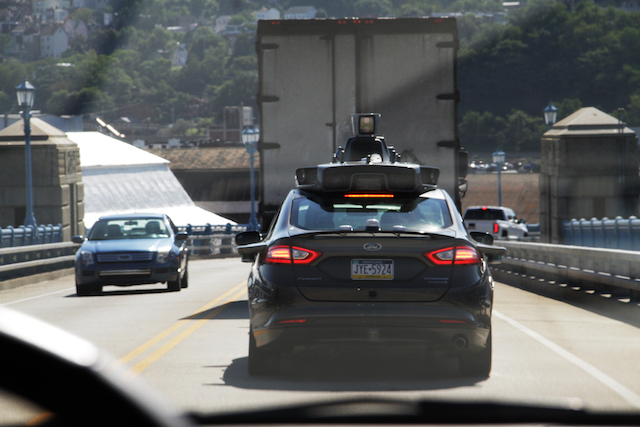Sunday Snapshot 09/18/16 
Show or tell: What's the best way to convey your seriousness about a particular vision of the future? Do you demonstrate what you mean, or clearly articulate your plan with words and then wait until you have something polished to actually present product to the world? That's the question currently dividing companies working on self-driving tech. Two of the most prominent players in any future-of-transportation discussion in the U.S. are Lyft and Uber, and both laid out major visions of where autonomous driving will take us this past week. Uber actually got reporters in its self-driving test cars in Pittsburgh and ferried them around; Lyft opted for a comms-heavy approach, with co-founder John Zimmer articulating the ride-hailing app's 10 year vision, including detailed predictions and timelines around when self-driving will become mass market. It's the age-old theory and practice tension writ large, and the actions of both Lyft and Uber reflect a growing polarity among many of the players in the transportation industry, including partners of both. Lyft's bosom buddy GM, for instance, which owns a 10 percent stake of the tech company, also espouses a policy of keeping quiet about its progress until it feels there's something substantial to show. This is evident in how it's rolling out its Cruise testing, which it has kept generally under wraps (though Cruise founder Kyle Vogt revealed to me on stage last week the size of its test fleet). Some companies are taking a more combined approach, like Ford, which has articulated its goals in terms of fielding a self-driving fleet by 2019, and in actually demonstrating its self-driving cars in action to media last week. Tesla, too, is both talking about the desired end state and putting tech to work in real life right now – Elon Musk has explained how he sees autonomous, individually owned Teslas operating in concert under an on-demand rental model, and he's also just rolling out Autopilot 8.0, an update to Tesla's highway autonomous driving system that should greatly improve its effectiveness. Ultimately at this stage, both the showing and the telling from most of the players operating in self-driving cars amount to marketing. There's an arms race on for talent, and companies are doing what they can to attract the best and brightest. For some, that means putting on a show; for others, appealing to logic. For others still, it means calling out everyone in the industry, and yet perhaps engaging in the most savvy marketing stunts of them all. Self-driving cars are still quite a long way away, especially in terms of any kind of widespread use. Between now and then, there will be a lot of hype, innovation theater, and jabs both subtle and unsubtle thrown around, so buckle up. |


No comments:
Post a Comment
Note: Only a member of this blog may post a comment.